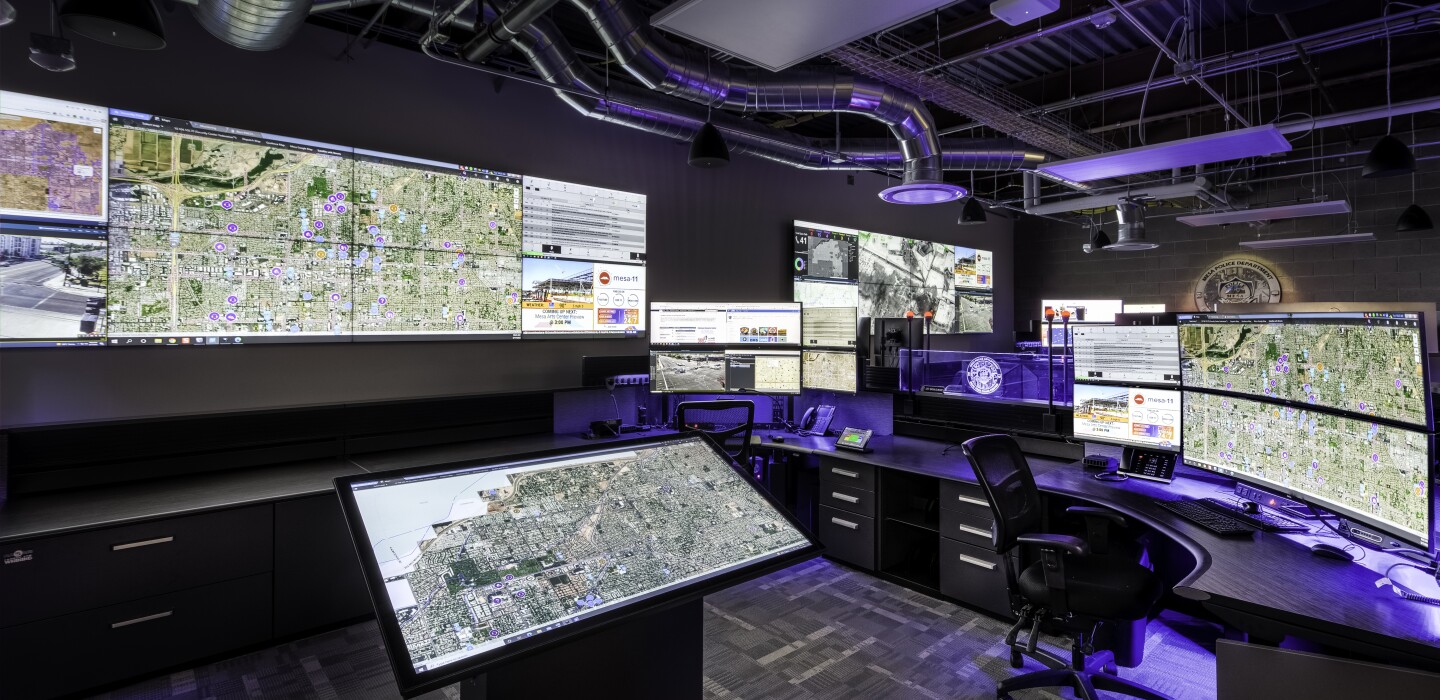
Crooks Can’t Dodge the Real-Time Crime Center ‘Double Click’
Sgt. Matt Kuntz of the Mesa, Ariz., Police Department is so confident in the new Real Time Crime Center, he has a message for anyone thinking of committing a crime in Mesa: “You can’t outrun a double click. We’ll find you.”
The center made its debut in May 2022 and combined existing resources with a new Genetec Security Center platform that leverages hundreds of cameras the department already had. The system gives police the ability to listen in on a 911 call in real time and immediately get a visual from the nearest camera. From there the technology allows officers to “track” a subject by double-clicking on cameras that follow the subject’s direction, a feature called Citigraf.
Citigraf allows officers to hear the live 911 call, see the caller’s location and the CAD comments as they are entered by the call taker, and then automatically display up to 16 of the closest video feeds, along with mapping, based on the caller’s geocoordinates.
“If someone is running from us and going north or south or whatever, our people know which camera to go to,” Kuntz said. “Then, visual tracking puts up a square on the screen and indicates the location. Double click on that square and it pushes you to the next camera. They can’t outrun a double click.”
During the first 12 months after the crime center was deployed, the department solved more than 930 felony cases and 640 misdemeanor cases in the community of about 550,000 residents.
“Just today,” Kuntz said, “we have a shooting, two shooters shooting at each other. After they’re done, one gets in a car and drives away, one is on foot and runs in another direction. We had our operators working and within a few minutes both were located and we led patrol right to them safely.”
The technology puts the department on new ground when it comes to catching criminals. Kuntz calls it working smarter and not harder. In the past, when a 911 call came in, the process went through various silos before police were notified of the scenario.
Previously, a 911 caller would get on the line with the 911 call taker, who would then transfer the call to a dispatcher, who would then dispatch police. “That takes time,” Kuntz said. “When a call happens today, we can listen in immediately. We’re hearing the person calling in saying, ‘Hey, there’s a shooting.’ And that [information] hasn’t even popped on our dispatcher’s screen yet.”
Previously, the dispatchers could monitor the CAD information and automatic vehicle location data to coordinate with nearby officers, but they didn’t have access to the live 911 calls, the license plate recognition system data or the more than 800 cameras strategically located around Mesa. The cameras are recording so officers can quickly rewind to get a better view and understanding of what happened.
“Before this, 99 percent of what we did was after the fact,” Kuntz said. He said the case with the two shooters previously may never have been solved without the new system in place.
“It’s great that they’re having this success this year,” said Larry White, a marketing manager for Genetec. “And it’s still not done. With policing and law enforcement you may see improvement, but there’s always more crime out there to solve.”
Kuntz said he’s up for the challenge. “We aren’t trying to be 2 or 3 percent better, we are trying to, as corny as it sounds, revolutionize the way we do policing.”


Average Rating